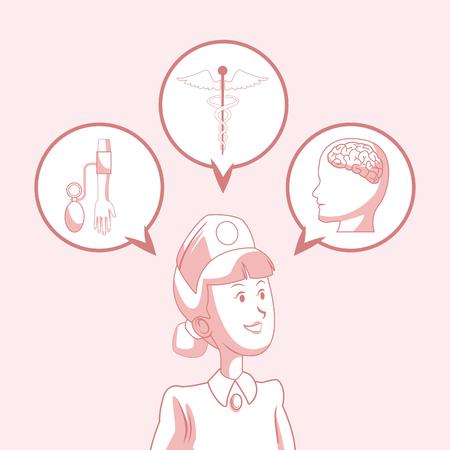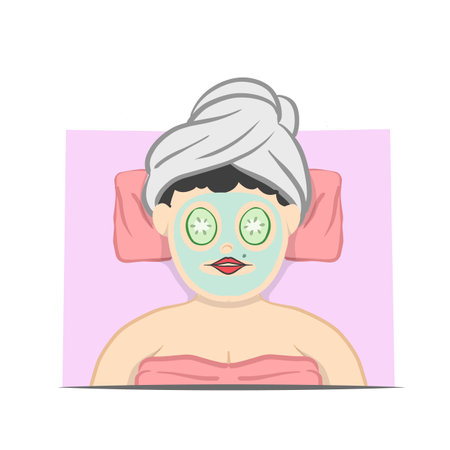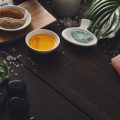Understanding Allergies in the Indian Context
India’s diverse landscape, unique climate conditions, and rich cultural traditions contribute to a distinct set of challenges when it comes to allergies caused by beauty products. Many Indians have sensitive skin types that react differently to chemicals and natural ingredients commonly found in cosmetics. Due to India’s hot and humid weather in many regions, perspiration and environmental pollutants can further aggravate allergic reactions. Additionally, traditional beauty practices—such as the use of mehendi (henna), herbal oils, and homemade remedies—can sometimes contain allergens that are not always recognized or tested for in modern clinical settings. Combined with the popularity of imported beauty products and changing grooming trends, this increases the risk of unexpected skin issues. Understanding how these factors interact is crucial for anyone seeking safe and effective beauty treatments in India, making allergy testing an essential first step before trying new products or treatments.
Popular Beauty Treatments and Hidden Risks
In India, beauty treatments are not just about looking good—they’re deeply connected to culture, celebrations, and personal care. From the intricate mehendi (henna) art during weddings and festivals to regular facials and trending hair colouring sessions, these practices have become part of everyday life for many. However, while these treatments are popular, few realise that they can also introduce unexpected health risks, especially allergic reactions.
Commonly Used Beauty Treatments in India
| Treatment | Typical Ingredients | Potential Allergens |
|---|---|---|
| Mehendi (Henna) | Natural henna leaves, sometimes mixed with artificial dyes like PPD (para-phenylenediamine) | PPD, synthetic dyes, preservatives |
| Facials | Creams with herbal extracts, fruit acids, fragrances | Fragrances, essential oils, preservatives |
| Hair Colouring | Chemical dyes, ammonia, natural extracts | Ammonia, PPD, resorcinol |
Unexpected Allergic Reactions: What Happens?
The most common issues include redness, itching, swelling, blisters or even severe dermatitis. Many people believe that ‘herbal’ or ‘natural’ means safe. But in reality, additives or chemicals mixed into products—often without clear labelling—can cause strong allergic responses. For example:
- Mehendi: Black henna containing PPD is notorious for causing severe skin reactions.
- Facials: Some facial creams contain potent allergens like artificial fragrances that can trigger rashes and burning sensations.
- Hair Colouring: Popular brands often use chemical dyes that may lead to scalp irritation and long-term sensitivity.
Cultural Habits and Overlooked Risks
In Indian households, it’s common to try new products recommended by friends or family without proper patch testing. This increases the chance of adverse reactions. Since beauty services are often performed at home or in small local salons where professional allergy testing isn’t routine, hidden risks multiply.
The bottom line: While beauty rituals are a vibrant part of Indian tradition and lifestyle, recognising their hidden risks—especially allergies—is vital for safeguarding your health.

3. Why Allergy Testing Matters Before Treatments
In India, where beauty treatments are an essential part of our daily grooming routine, the importance of allergy testing cannot be overstated. Whether you are visiting a high-end salon in Mumbai or trying a new hair dye at home in Delhi, the risk of allergic reactions from commonly used products is real and present. Patch tests and allergy screening play a crucial role in identifying potential threats before they become serious health issues. Especially with the increasing use of imported and chemical-based products, Indian consumers must prioritise safety over trends.
When salons conduct patch tests, they help clients spot allergens specific to their skin type and medical history. For example, ingredients like paraphenylenediamine (PPD) in hair dyes or certain preservatives in skincare can trigger reactions ranging from mild irritation to severe rashes or even breathing difficulties. By taking just 24-48 hours for a simple patch test, both clients and beauty professionals can prevent unwanted complications.
This precaution is not limited to salons—at-home beauty routines also demand attention. Many Indians prefer DIY treatments using locally available products or online kits. Without proper screening, there’s a higher chance of developing allergies that may require medical intervention later. Making patch testing a standard step ensures that your quest for beauty doesn’t compromise your health.
Ultimately, integrating allergy testing into every beauty treatment reflects a responsible and client-focused approach. It builds trust between service providers and customers while minimising risks—a win-win situation that aligns perfectly with India’s growing emphasis on wellness and personal care.
4. Typical Symptoms to Watch Out For
When it comes to beauty treatments in India, recognizing the early signs of an allergic reaction is crucial, especially considering our diverse skin tones and unique sensitivities. Indian skin can react differently compared to lighter or darker skin types commonly discussed in Western medical literature. Early identification of symptoms helps prevent complications and ensures that you get prompt care if needed.
Common Signs of Allergic Reactions in Indian Skin
| Symptom | Description | Severity Level |
|---|---|---|
| Mild Itching | A subtle, persistent urge to scratch, often mistaken for dryness or normal irritation. | Low |
| Redness (Erythema) | Visible reddish patches, which may appear more as dark brown on wheatish or deeper Indian skin tones. | Medium |
| Swelling (Edema) | Puffiness around eyes, lips, or treated areas; more obvious when compared to unaffected areas. | Medium to High |
| Rashes/Hives (Urticaria) | Bumpy, raised patches that might blend with natural pigmentation, sometimes missed until itching becomes severe. | High |
| Burning Sensation | A stinging feeling especially after facial treatments or hair dye application. | Medium |
| Skin Darkening or Hyperpigmentation | Patches that become darker than your usual complexion post-treatment, a common concern for Indian skin. | Medium to High |
| Severe Rashes/Blisters | Painful eruptions or blisters; a sign of strong allergic response needing immediate attention. | Very High |
Why Early Identification Matters for Indians?
Allergic reactions can progress rapidly—from simple itching to severe rashes and even life-threatening conditions like anaphylaxis. For Indian skin, some symptoms such as redness or hives may not be immediately visible but can manifest as darker patches or unusual swelling. This makes self-checks and awareness essential. Early identification allows you to stop using the problematic product right away and seek medical advice before symptoms escalate.
Ignoring these signs may lead to long-term issues such as hyperpigmentation, scarring, or even permanent sensitivity. Since many beauty parlours and clinics use products not always tested specifically for Indian skin, staying alert to these symptoms—and acting fast—can save you from unnecessary health risks.
5. Addressing Social Stigma and Misconceptions
In India, there are many misconceptions surrounding beauty allergies and their seriousness. Many people tend to believe that mild reactions—like itching, redness, or rashes—are normal side effects of using beauty products or salon treatments. This cultural tendency to dismiss early symptoms often leads individuals to ignore the warning signs, thinking they will subside on their own. Unfortunately, this attitude can result in delayed diagnosis of severe allergic reactions, sometimes escalating into serious health risks.
There is also a social stigma attached to discussing allergies openly. In Indian society, talking about skin issues or sensitivities is sometimes viewed as a sign of weakness or poor hygiene. As a result, many individuals hesitate to share their experiences or seek medical help, fearing judgment from friends and family. Such misconceptions prevent people from understanding the real dangers associated with beauty treatments and discourage them from opting for preventive measures like allergy testing.
Awareness is crucial in breaking these barriers. Educating both beauty professionals and consumers about the importance of recognizing and addressing allergy symptoms can create a safer environment for everyone. By encouraging open conversations about allergies and promoting regular allergy testing before undergoing any beauty treatment, we can help reduce health risks and ensure well-being across all sections of society in India.
6. Steps for Safe Beauty Experiences
Ensuring safety during beauty treatments in India involves clear communication and proactive actions, both for salons and individuals. Here are practical steps to create a safer beauty environment:
Communicate Openly with Your Beautician
Before any procedure, always inform your beautician about your allergies, sensitivities, or previous bad reactions. Don’t hesitate to ask questions about the products being used—insist on knowing ingredients and whether they are suitable for your skin type. Effective communication can prevent misunderstandings and serious health risks.
Insist on Allergy Testing
Never skip a patch test, especially with new products like hair dyes, facials, or waxing creams. Reputable Indian salons should offer this service; if not, request it specifically. A patch test may seem like a small step but it can save you from major allergic reactions later.
Check Salon Hygiene Standards
Observe the cleanliness of the salon—look at how tools are sanitized, whether fresh towels are provided, and if disposable applicators are used. High hygiene standards reduce the risk of infections and skin irritations.
Choose Certified Products Only
Ask your beautician if the products are certified by recognised authorities like BIS (Bureau of Indian Standards) or other reputable international bodies. Avoid unlabelled or locally mixed solutions whose ingredients are unknown.
Stay Informed & Educate Yourself
Read up about common allergens in beauty products used across India—like paraphenylenediamine (PPD) in hair colour or certain preservatives in creams. Being aware helps you make informed choices when visiting salons or purchasing products for home use.
If Something Feels Wrong, Speak Up
If you notice itching, burning, or any discomfort during a treatment, alert your beautician immediately and stop the process. It’s always better to be cautious than risk long-term health issues.
By following these steps and fostering a culture of safety-first in beauty care routines, both clients and professionals in India can enjoy beautiful results without compromising their health.


